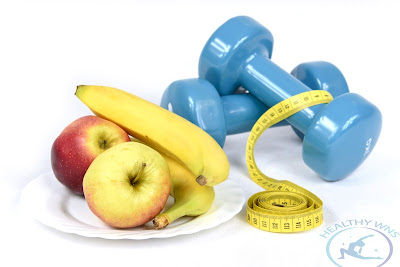The 4 Most Common Lifestyle Mistakes Damaging Your Health
Most of us start our day without our main meal, breakfast. Many of us can say we eat and have our breakfast.
But eating Fast Food doesn't generally give us the recommended daily intake recommended by Nutritionists for products like Fruits and Vegetables.
The absence of this in our daily lives puts us on an unhealthy path. This exposes you to difficult risks such as obesity, type 2 diabetes, coronary artery disease, stroke, and some tumours.
I recommend changing 4 things in your daily schedule that can change your health.
Mistake 1: Is Skipping Breakfast Bad for You?
Since we're in a hurry and have limited time in the morning we can't appreciate breakfast, we teach ourselves by saying:
Well, I'm not hungry anyway. Or on the other hand, I'll have something quick to eat (a pop tart, a doughnut, or a hot pocket).
The Solution:
Skip it I show you some quick Breakfast Recipes that you can eat even on the go, by trying to get a piece of a new natural product such as peaches, bananas, peaches, oranges, grapes, bowls of oats (even packets of oatmeal), cereal (high-fibre, low-sugar) sausage Fried eggs, and whole wheat bread/toast.
Mistake 2:
Lacking the Recommended Daily Fruits and Vegetables - Some families don't even consume 50% of the recommended intake for their life balance, and for Life healthcare.
The Solution:
Do you want to stay healthy and have heaps of energy?
Eat 2½-6 cups of beautiful, ground-grown foods on a regular basis, including fruits and vegetables. Include your cups by eating foods rich in Fruits and Vegetables at every feast as well as snacks.
The cup size you want varies with age.
- Ages 2-3 are suggested 1 c. of fruits and 1 c. vegetables.
- Ages 4 to 7 cm Fruits 1 c. vegetables.
- Ages 8 to 10 1 c. fruits 1 c. vegetables.
- Ages 11 to 13 1 c. fruits 2 c. vegetables.
- Ages from 14 to 18 years 1 c. fruits 2 c. vegetables.
- Ages 19 to 25 2 c. fruits 2 ½ c. vegetables.
- Ages 26-50 1°C. fruits 2 c. vegetables.
- Ages 51+ 1½g fruits 2g vegetables.
Mistake 3:
Not Knowing the Importance of Eating Fruits and Vegetables It's been overlooked over and over again why we should modify our dinners and incorporate organic produce and vegetables and how good they really are for our lives.
The Solution:
Fruits and vegetables are probably the best and best-tasting Food Sources. They are low in sodium and in calories, and most are fat-free.
Blue, purple, green, white, yellow, orange and red products should be included in your meals and snacks.
They help your body get the proper Nutrition from the minerals, Fibre and other natural substances it needs to stay healthy and have Physical Fitness.
For a healthy and proper diet, fruits and vegetables may help you:
- Enhance your energy level and work to increase it
- Lowering the risk of some cancer
- Reduce the risk of type 2 diabetes
- Reduce the risk of heart disease, stroke and high blood pressure
- Control your weight and help to Lose Weight
- Help with your energy level
- Look and feel perfect
Mistake 4:
Unsure of how to Healthy Eating When our lives are full and we have too many busy lives - we don't feel like we have enough time to keep fruits and vegetables at home, have them close at hand, or we have relatively little time to prepare our daily meals and meals.
The Solution:
Fruits and vegetables are not difficult to prepare and are ideal on the go or if you are in a hurry. Here are the basic ways to get them into every meal or fast food:
- With a strict spending plan, you can buy more fruits and vegetables.
- Due to its low cost and flavour, you can buy fresh fruits and vegetables in season.
- Stock up on frozen vegetables, for special food for quick and Healthy Cooking simple.
- Help your family eat more fruits and vegetables at home, for overall Home health.
- Keep a bowl of new fruits close by so you can eat them as a snack throughout the day.
- Add some fruit to cereal like oats, and have a small glass of 100% natural juice for breakfast.
- Eat at least two vegetables with dinner, and as a dessert, take a sweet piece of fruit.
- Eat more fruits and vegetables while you work.
- Bite into raisins and other dry fruits or anything sweet, and avoid sweets.
- In the sandwich put more lettuce, tomatoes and different vegetables.
- Carry fruit and vegetable dishes with you to office gatherings and purchases.
- When eating out, ask for fruits and vegetables.
- Choose Pizzas that contain at least three vegetarian ingredients, such as peppers, onions, and mushrooms

